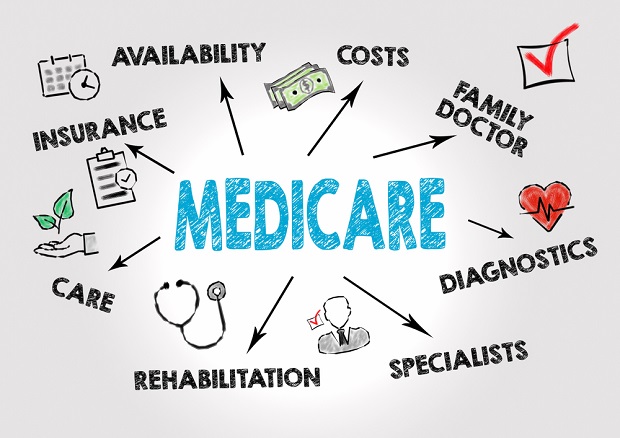 Overall Medicare andMedicaid spending rose faster than private health care spendingsimply because both programs experienced major increases inenrollment.
Overall Medicare andMedicaid spending rose faster than private health care spendingsimply because both programs experienced major increases inenrollment.
The private health insurance sector couldlearn a thing or two from Medicare and Medicaid.
|A new report from the Robert Wood JohnsonFoundation shows that in recent years the two public healthprograms have managed to contain per-enrollee health costs much better than private healthplans.
|From 2006-17, per-enrollee costs grew by an average of 1.6percent for Medicaid and 2.4 percent for Medicare. In contrast,private health plans saw per-member costs grow by an average of 4.4percent annually.
|Related: What can the ACA marketplace learn from MedicareAdvantage?
|Overall Medicare and Medicaid spending rose faster than privatehealth care spending simply because both programs experienced majorincreases in enrollment. Baby boomers began to retire and become eligible forMedicare, while the Affordable Care Act opened up Medicaid tomillions of additional people who were previously ineligible.
|As a result, overall spending increased at an average annualrate of 6 percent for Medicaid and 5.2 percent for Medicare,compared to 4.4 percent for private health plans.
|Growth in Medicare's per-enrollee costs were largely driven byprescription drugs, while Medicaid's increased costs were mostlydriven by physician costs and administrative services, the reportfinds. Hospital costs were the biggest contributor to growth inprivate health care per-patient spending.
|While the study touts the success of the public sector'scost-management, it warns that the two major public health programswill likely experience greater cost growth in the comingdecade.
|The study projects that per-enrollee costs will grow 4.8 percentper year for Medicaid and 4.7 percent for Medicare. Overall costgrowth, however, will rise 6.2 percent per year for Medicaid and7.6 percent for Medicare as enrollment in both programs continuesto increase.
|While the study raises alarms about the fiscal implications ofthe spending growth in both health programs, it does not argue thateither are in need of a radical restructuring.
|“We do not intend to suggest that there is no room for modestpolicy proposals aimed at further containing costs in both publicprograms,” they wrote. “For example, the Congressional BudgetOffice has recently released estimates of several reasonableapproaches, including limiting state use of provider taxes inMedicaid, modifications to Medicare cost-sharing and restrictionson Medi-gap policies, and modest part B and part D premiumincreases.”
|Read more:
Complete your profile to continue reading and get FREE access to BenefitsPRO, part of your ALM digital membership.
Your access to unlimited BenefitsPRO content isn’t changing.
Once you are an ALM digital member, you’ll receive:
- Critical BenefitsPRO information including cutting edge post-reform success strategies, access to educational webcasts and videos, resources from industry leaders, and informative Newsletters.
- Exclusive discounts on ALM, BenefitsPRO magazine and BenefitsPRO.com events
- Access to other award-winning ALM websites including ThinkAdvisor.com and Law.com
Already have an account? Sign In
© 2024 ALM Global, LLC, All Rights Reserved. Request academic re-use from www.copyright.com. All other uses, submit a request to [email protected]. For more information visit Asset & Logo Licensing.








